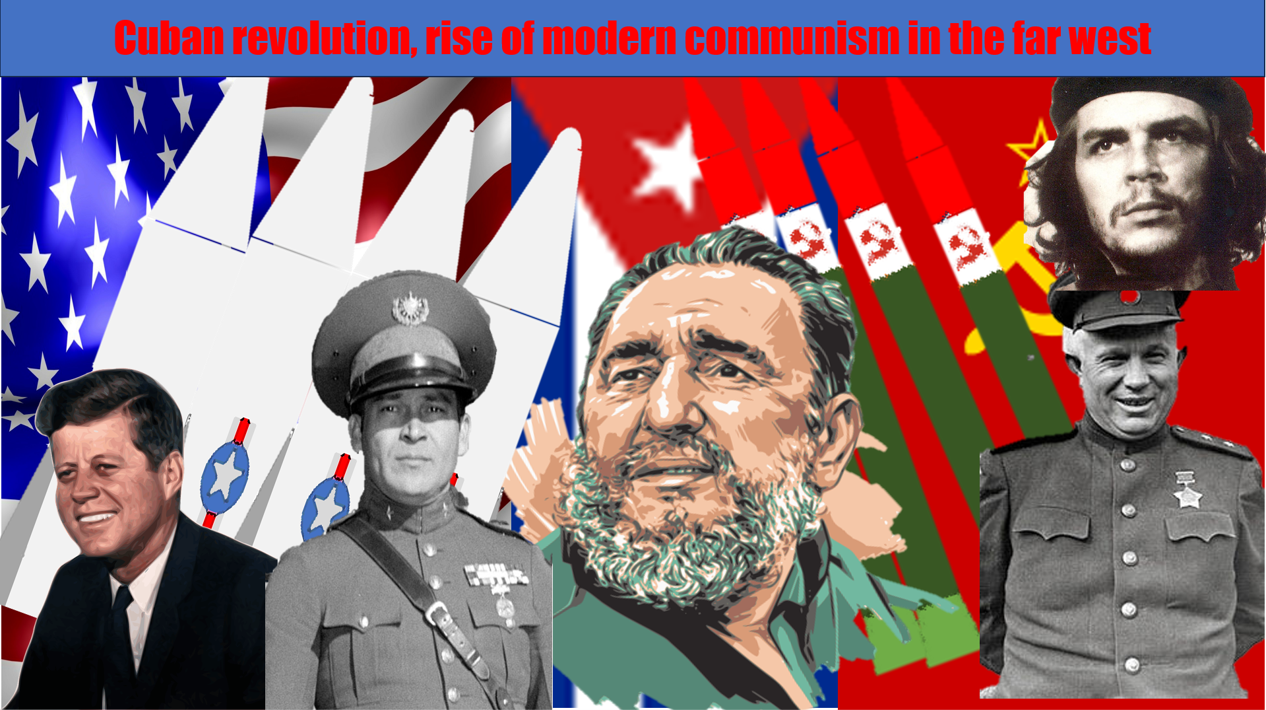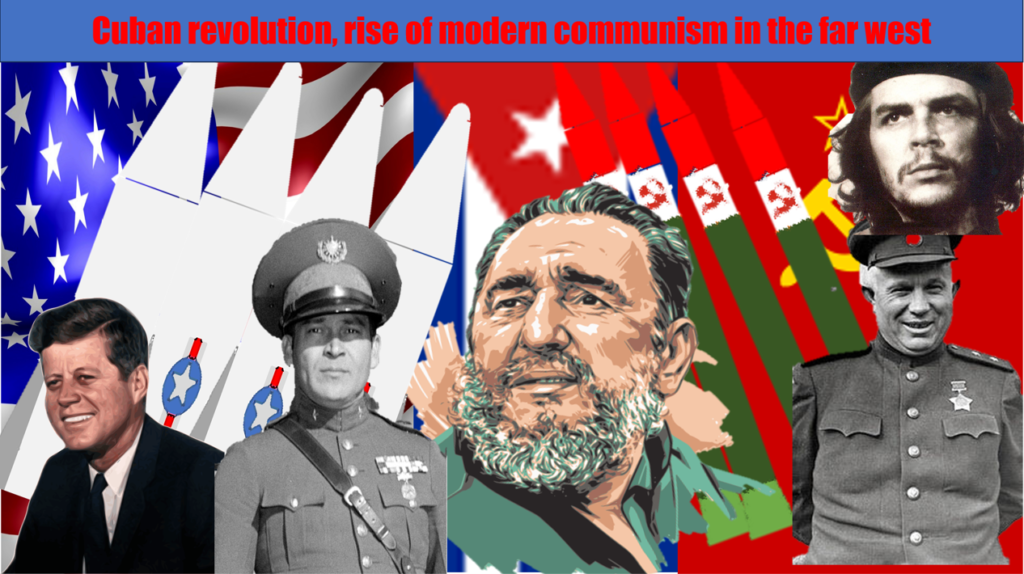I’m sure that almost all of who are reading this must have seen the image of a man with lot of hair, cap with a star in it just as many socialist revolutionaries. Yes, he is very popular for his fearless, Marxist, selfless and internationalist spirit- Che Guevara.
And I’m sure that some of you must have seen about embargoes on Cuba in newspapers or you might have been told by capitalist propaganda that Cuba is evil, anti-democratic, and is dying out of starvation. But this propaganda Is unfortunately not even a bit true. So, we will see the real truth about the revolution.
Before we go into the revolution we will see the history of Cuba before the revolution. Cuba was originally inhabited by native Americans. Unfortunately, just as every other part of the South American as well as north American continent it was also exploited by the tyrannic and ruthless European colonialism. It started when Columbus landed there in 1492. After his arrival, Spain conquered Cuba and appointed Spanish governors to rule in Havana (Currently the capital of Cuba). Europeans continued to exploit Cuba until the end of the Spanish American war. After the war the Americans set up a totalitarian military dictatorship in Cuba.
Thankfully figures like Jose Marti already started the Cuban independence movement in 1895, but Cuba got independence only after the 3 and a half years of American military dictatorship. Still Cuba was not fully independent, yes, After gaining independence in 1902, Cuba’s sovereignty was limited by the Platt Amendment ( a law which allowed the U.S. to intervene in Cuban affairs and maintain a naval base at Guantánamo Bay.) Not only that Cuban economy was almost fully dependent on it’s Sugar exports to the United states of America.
But somehow the Cubans created a democracy. But don’t get fooled by the word democracy, Actually the democracy was just a namesake Cuba didn’t have a proper democracy, Cuba at that time was a playground for Capitalists. The difference between rich and poor (economic inequality) was really high.
To make things worse in 1933 a group of sergeants led by Fulgencio Batista overthrew the previous government And made a military dictatorship. Also Batista was an United States puppet which means he was technicaly controlled by the United States. Under his rule Cuba became a playground for U.S. imperialism, marked by economic exploitation, severe inequality, and suppression of the Cuban people.
But a young Lawyer and a politician of the left populist orthodox party, Alejandro Fidel Castro Ruz thought that the only way to get rid of Batista was revolution. So he started ograganising a small army to overthrow the tyrant Batista and create a socialist Utopia (which he later did.)
This army first attacked a group of military buildings known as the Moncada Barracks in Santiago de Cuba in 26th July 1953. Despite the failure, this event marks the beginning of the revolutionary struggle and establishes the 26th of July Movement.
After this Castro with other revolutionaries were sentenced for 15 years of imprisonment after a trial in which he gave a two hour speech.
Then later those revolutionaries were exiled to Mexico, where they regrouped and planned the next phase of their struggle against the Batista regime.
Castro, along with Che Guevara( the important revolutionary leader (who is currently a popular socialist icon) who joined Castro after he toured across Latin America experiencing poverty and other revolutionaries, lands in Cuba on the yacht Granma. Despite initial setbacks, they establish a base in the Sierra Maestra mountains in 1956, second of December.
The revolutionaries engage in guerilla warfare, gaining popular support through their efforts to aid the poor and disenfranchised. Their tactics and commitment gradually weaken Batista’s forces.
After few years of revolutionary struggle the revolutionaries won and Batista dis-honourably fled Cuba.
United States who hates socialist countries posed an embargo against Cuba, which means many countries from north as well as south American continents including the United states. Then in 1961, the bay of pigs invasion was caried out to make Cuba Capitalist again. But fortunately the Invasion failed. Therefore Cuba’s Alie, the soviet union posed nuclear missiles in Cuba in case Amereica caused any trouble. Anoter reason was the United State threatened soviet union by posing missile in turkey to Threaten the Soviet Union. Despite these challenges the Cubans are extremely doing well.
Social Reforms
- Universal Healthcare: One of Castro’s most significant achievements was the establishment of a comprehensive, universal healthcare system. Cuba’s healthcare system became a model for many developing countries, providing free medical services to all its citizens. As a result, Cuba boasts some of the best health indicators in the region, including high life expectancy and low infant mortality rates.
- Education: Castro placed a strong emphasis on education, resulting in the eradication of illiteracy within a year through the Literacy Campaign of 1961. Education became free and accessible at all people, leading to a highly educated population with a literacy rate of almost 100%.
- Housing: The Cuban government undertook extensive housing projects to provide affordable housing for the population. Slums and inadequate living conditions were addressed, with many Cubans receiving homes at minimal costs.
Economic Reforms
- Land Redistribution: One of the first acts of the revolutionary government was agrarian reform, which involved the redistribution of land from large landowners to peasants. This significantly improved the living standards of rural populations and reduced economic inequality.
- Nationalization of Industries: Castro’s government nationalized major industries, including sugar, mining, and telecommunications, ensuring that profits were used for the benefit of the Cuban people rather than foreign corporations. This move aimed to reduce dependence on foreign powers and promote self-sufficiency.
Cultural and International Achievements
- Promotion of Arts and Culture: The Cuban Revolution promoted arts and culture, making them accessible to the masses. Institutions like the Cuban Institute of Cinematographic Art and Industry (ICAIC) were established, fostering a vibrant cultural scene.
- International Solidarity: Under Castro, Cuba extended its revolutionary solidarity by supporting liberation movements in Africa, Latin America, and Asia. Notably, Cuba played a crucial role in the Angolan Civil War and supported anti-apartheid movements in South Africa. Cuban doctors and teachers were sent to numerous countries, providing much-needed assistance and strengthening international relations.
- Sports Development: Castro invested in sports, making Cuba a powerhouse in various international competitions, especially the Olympics. Sports facilities and training programs were made accessible to all citizens, promoting health and national pride.
Environmental Initiatives
- Sustainable Agriculture: In response to the Special Period following the collapse of the Soviet Union, Cuba adopted sustainable agricultural practices, becoming a leader in organic farming and urban agriculture. This transition helped ensure food security despite severe economic challenges.
Resilience During the Special Period
- Adaptation and Innovation: During the economic crisis of the 1990s, known as the Special Period, Castro’s leadership was instrumental in Cuba’s resilience. The country adapted by diversifying its economy, promoting tourism, and developing biotechnological industries, all while maintaining its commitment to social welfare.


Leave a Reply